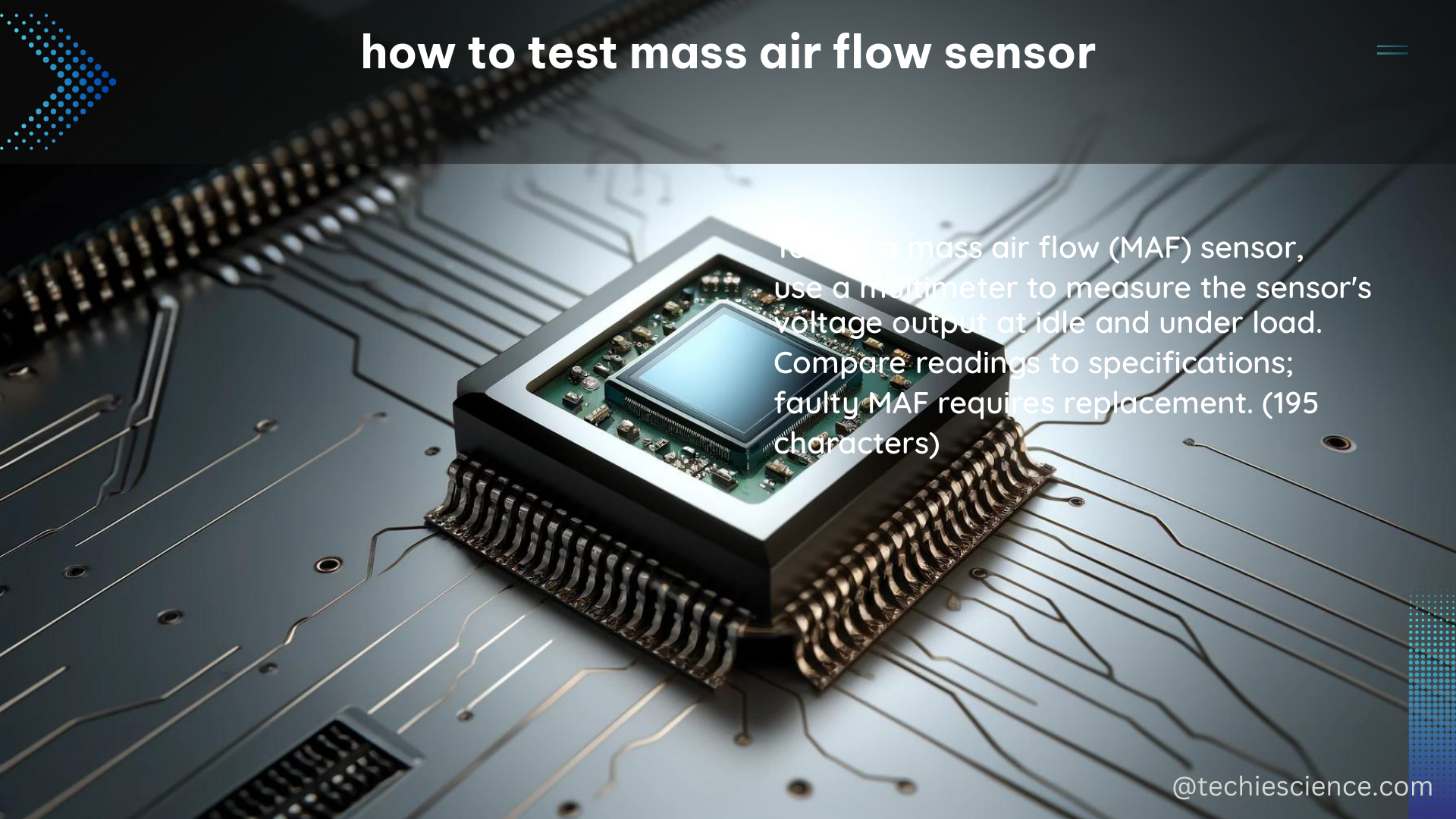The mass air flow (MAF) sensor is a critical component in modern vehicles, responsible for measuring the amount of air flowing into the engine’s intake manifold. Accurate readings from the MAF sensor are essential for the engine control unit (ECU) to precisely regulate the air-fuel mixture, ensuring optimal engine performance and fuel efficiency. In this comprehensive guide, we’ll explore various methods and technical specifications to effectively test and diagnose the MAF sensor.
Testing with an OBD2 Scanner
One of the most convenient ways to test the MAF sensor is by using an OBD2 (On-Board Diagnostics) scanner, such as the Innova 7111. By plugging the scanner into your vehicle’s OBD2 port, you can access the live data from the MAF sensor and monitor its performance.
- At idle, the MAF sensor value should read between 2 to 7 grams per second (g/s).
- When the engine is revved to 2500 rpm, the MAF sensor value should increase to a range of 15 to 25 g/s, depending on the engine displacement.
- If the MAF sensor value falls outside of these expected ranges, it may indicate a problem with the sensor or the overall air intake system.
Testing with a Low-Cost OBD2 Scan Tool

Another option for testing the MAF sensor is to use a low-cost OBD2 scan tool, such as the LAUNCH CR319. These affordable tools can provide valuable insights into the MAF sensor’s performance.
- With the engine off and not running, the MAF sensor’s grams per second reading should not be excessively high.
- When you start the engine and double the engine RPM, the MAF sensor’s grams per second reading should also approximately double.
- Observing these expected changes in the MAF sensor’s output can help you identify any potential issues with the sensor.
Measuring Voltage and Frequency
For a more in-depth analysis, you can test and measure the MAF sensor’s voltage and frequency using a frequency clamp meter.
- Mass airflow sensors typically take a voltage input and convert it into a frequency output, typically ranging from 2000 to 3000 hertz (Hz) at idle.
- As you open the throttle and increase engine RPM, the frequency output from the MAF sensor should also increase proportionally.
- By monitoring the voltage and frequency values, you can verify the proper operation of the MAF sensor and identify any discrepancies that may indicate a problem.
Cleaning the MAF Sensor
If the MAF sensor is suspected of being dirty or clogged, you can attempt to clean it using an air intake cleaner. Follow these steps:
- Spray 12 to 15 short bursts of the air intake cleaner onto the wire or plate of the MAF sensor, ensuring that the cleaner does not come into direct contact with the sensor wires.
- Allow the MAF sensor to dry completely before reinstalling it in the air duct.
- Avoid touching the sensor element with your fingers, as the oils from your skin can contaminate the sensor and affect its performance.
Technical Specifications and Importance
The MAF sensor plays a crucial role in the engine’s air-fuel management system. It measures the amount of air flowing into the intake manifold, and the ECU uses this information to determine the appropriate amount of fuel to inject into the cylinders.
- If the MAF sensor fails or becomes clogged with particles, it can provide the ECU with inaccurate air flow data, leading to an improper air-fuel mixture.
- This can result in various driveability issues, such as poor acceleration, reduced fuel efficiency, and even engine damage due to an excessively rich or lean air-fuel mixture.
By understanding the technical specifications and testing methods for the MAF sensor, you can effectively diagnose and troubleshoot any issues related to this critical component, ensuring your vehicle’s optimal performance and fuel efficiency.
References
- MAF Test and Diag – Mass Airflow Sensor – YouTube
- MAF How to test mass air flow sensor voltage and frequency – YouTube
- How To Test And Clean A Mass Air Flow Sensor (DIY) – Innova
- A way to measure Air Flow beyond the OEM capability – Bimmerpost
- 2 Ways Test a MAF Sensor with a Low-Cost Scan Tool (Mass Air … – YouTube

The lambdageeks.com Core SME Team is a group of experienced subject matter experts from diverse scientific and technical fields including Physics, Chemistry, Technology,Electronics & Electrical Engineering, Automotive, Mechanical Engineering. Our team collaborates to create high-quality, well-researched articles on a wide range of science and technology topics for the lambdageeks.com website.
All Our Senior SME are having more than 7 Years of experience in the respective fields . They are either Working Industry Professionals or assocaited With different Universities. Refer Our Authors Page to get to know About our Core SMEs.